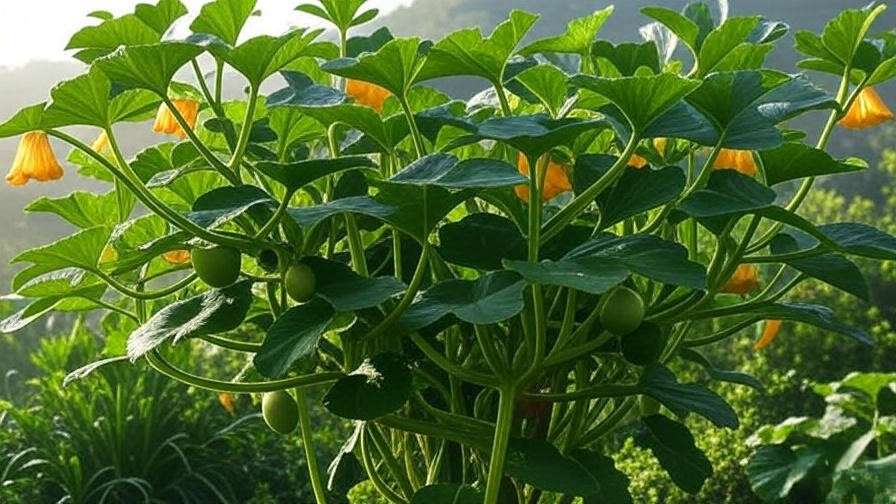Imagine a tree that blends tropical elegance with quirky, pumpkin-like fruits—a true showstopper for any garden! The pumpkin tree, known scientifically as Crescentia cujete or the calabash tree, is a unique gem that captivates plant lovers with its glossy leaves, bell-shaped flowers, and gourd-like fruits. Whether you’re a seasoned gardener or a curious beginner, growing a thriving pumpkin tree is within your reach with the right care. This comprehensive guide dives deep into expert-backed tips to ensure vibrant blooms and healthy growth, solving common challenges and transforming your space into a tropical paradise. 🌴 By the end, you’ll be equipped to nurture a stunning pumpkin tree that’s the envy of every plant enthusiast! 🌼
What Is a Pumpkin Tree? Understanding This Unique Plant 🌿
Botanical Background and Characteristics 📚
The pumpkin tree, or Crescentia cujete, is not a true pumpkin but earns its nickname from the large, round, gourd-like fruits that hang from its branches. Native to Central and South America, this evergreen tree thrives in tropical climates and can grow 20-30 feet tall in ideal conditions. Its glossy, dark-green leaves provide year-round beauty, while its creamy, bell-shaped flowers bloom at night, adding a touch of magic. 🌸 The fruits, often called calabashes, are hard-shelled and used in crafts, musical instruments, or decor in many cultures. Unlike true pumpkins (Cucurbita species), these fruits are inedible but bring unique charm to gardens. 🎃
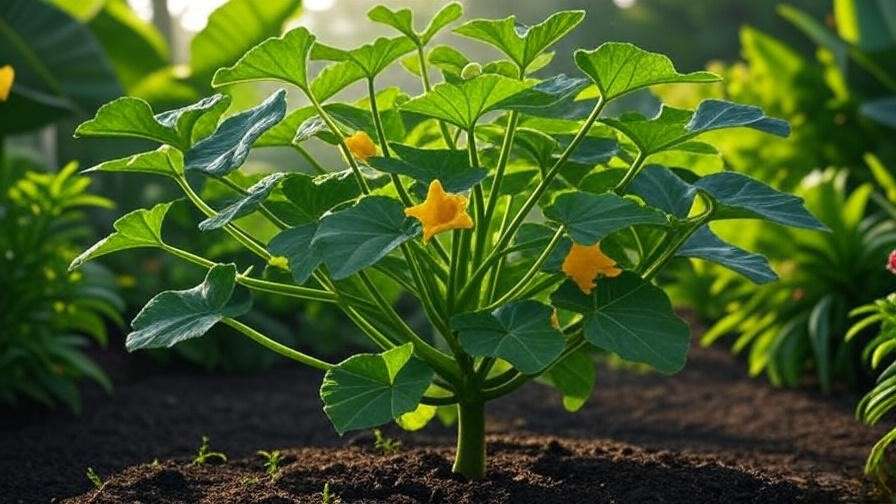
Why Grow a Pumpkin Tree? 🌟
Why choose a pumpkin tree for your garden? Its striking appearance makes it a focal point in landscapes or patios, blending tropical vibes with low-maintenance care. 🌳 It’s versatile, thriving in large pots for smaller spaces or as a statement tree in larger yards. Plus, its flowers attract pollinators like bees and butterflies, boosting your garden’s ecosystem. 🐝 For plant lovers seeking something extraordinary, the pumpkin tree delivers aesthetic appeal and cultural intrigue without demanding expert-level skills. It’s perfect for addressing the desire for a unique, eye-catching plant that stands out from common ornamentals. ✨
Choosing the Right Pumpkin Tree for Your Space 🪴
Varieties and Cultivars 🌳
While Crescentia cujete is the primary species, slight variations exist in fruit size and tree height. Some cultivars are bred for smaller, dwarf forms, ideal for container gardening or compact yards. 🌱 For example, dwarf varieties like ‘Compacta’ stay under 10 feet, making them perfect for patios. Larger cultivars suit expansive landscapes where their sprawling canopy can shine. When selecting, consider your space and aesthetic goals—smaller fruits may be more decorative, while larger ones are ideal for crafting. 🌸 Expert Tip: Check with local nurseries for region-specific cultivars to ensure climate compatibility. 🏺
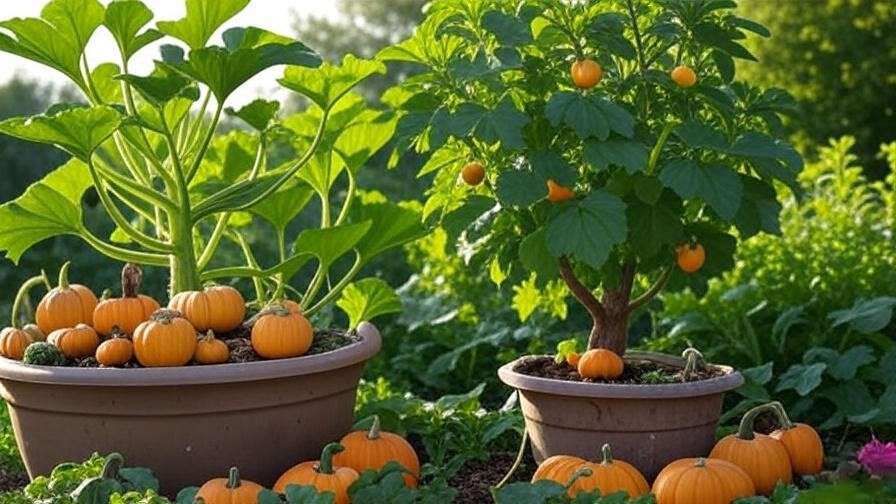
Assessing Your Environment 🌞
Pumpkin trees thrive in USDA hardiness zones 10-12, loving warm, humid conditions with temperatures above 50°F (10°C). 🌞 They need full sun—6-8 hours daily—for optimal growth and flowering. If you’re in a cooler climate, consider growing in a large pot to move indoors during winter. 🏠 Space is key: full-sized trees need room to spread, so plan for a 15-20-foot radius in gardens. For indoor growing, ensure bright light and good air circulation. Addressing the reader’s need for adaptability, this tree can flourish with the right environmental tweaks. 💡
Planting Your Pumpkin Tree: Step-by-Step Guide 🌱
When and Where to Plant 📅
Timing and location are critical for a healthy pumpkin tree. Plant in spring or early summer when temperatures are consistently warm to encourage root establishment. 🌼 Choose a site with full sun and well-draining soil—sandy loam or amended clay works best. Test soil pH (aim for 6.0-7.5) and enrich with organic matter like compost for nutrient-rich grounding. 🌿 Avoid low-lying areas prone to waterlogging, as this can stress roots. Reader Pain Point: A poorly chosen site leads to weak growth, so this step ensures long-term success. ✅
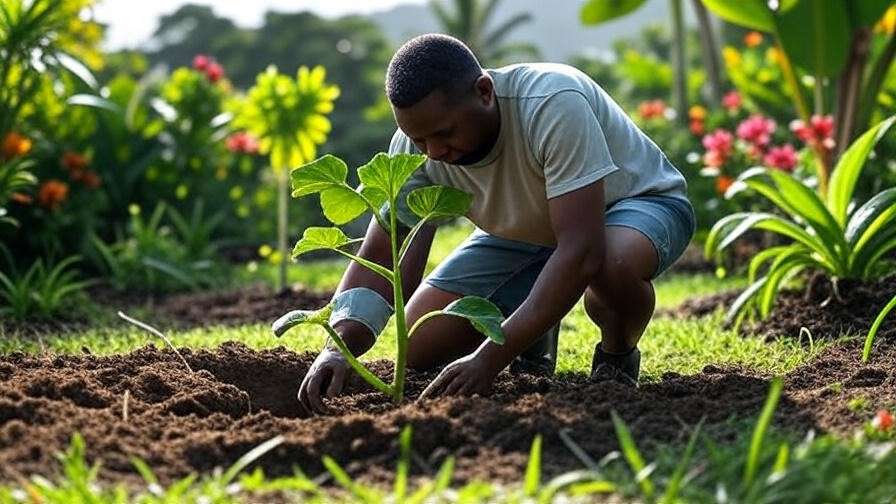
Planting Techniques 🌿
- Dig the Hole: Make it twice as wide and as deep as the root ball to give roots room to spread. ⛏️
- Amend Soil: Mix in compost or a slow-release fertilizer (10-10-10) to boost nutrients. 🧪
- Position the Tree: Place the root ball level with the soil surface, ensuring no roots are exposed. 🪴
- Backfill and Water: Fill the hole, tamp down gently, and water deeply to settle the soil. 💧
Expert Insight: Water thoroughly after planting and add a 2-inch layer of mulch to retain moisture and deter weeds. 🪵 This method minimizes transplant shock, addressing a common planting concern. 🌱
Essential Care Tips for a Thriving Pumpkin Tree 🌳
Watering Needs 💦
Consistent watering is key, especially during the first year. Water weekly, providing 1-2 inches of water, adjusting for rainfall. 🌧️ In hot climates, check soil moisture—keep it moist but not soggy. Overwatering can lead to root rot, signaled by yellowing leaves or mushy roots. 🚫 Pro Tip: Use a moisture meter for precision, and apply a 3-inch mulch layer (bark or straw) to maintain soil moisture and temperature. 🪵 This addresses the reader’s need for simple, effective watering routines. ✅
Fertilizing for Optimal Growth 🌿
Feed your pumpkin tree monthly during the growing season (spring-summer) with a balanced NPK fertilizer (10-10-10) or organic compost. 🧪 Apply according to package instructions, typically 1-2 pounds for young trees, spread evenly around the drip line. Avoid over-fertilizing, which can cause leaf burn or excessive foliage without flowers. ⚠️ In fall and winter, reduce feeding to let the tree rest. Expert Advice: Test soil annually to tailor nutrient inputs, ensuring vibrant growth without waste. 🌱
Pruning and Maintenance ✂️
Prune in late winter or early spring before new growth starts. 🌱 Remove dead, damaged, or crossing branches to improve air circulation and shape the tree. Use sanitized shears to prevent disease spread. 🧼 For dwarf varieties, maintain a compact shape by trimming back long shoots. Reader Solution: Regular pruning prevents leggy growth and encourages more blooms, addressing aesthetic concerns. 🌸 Check for suckers at the base and remove them to focus energy on the main canopy. ✅
Sunlight and Temperature Requirements ☀️
Pumpkin trees crave full sun—less than 6 hours daily can reduce flowering. 🌞 Ensure temperatures stay above 50°F (10°C) to avoid leaf drop. In cooler regions, protect potted trees by moving them indoors or covering them during frost. 🧣 For low-light areas, supplement with grow lights to mimic tropical conditions. 💡 Expert Tip: Rotate potted trees every few weeks to ensure even sun exposure, solving uneven growth issues. 🌿
Common Problems and Solutions 🐞
Pests and Diseases 🦟
Pumpkin trees are relatively pest-resistant but may attract aphids, spider mites, or scale insects. 🐜 Inspect leaves weekly, especially undersides, and treat with neem oil or insecticidal soap for eco-friendly control. 🧴 Fungal issues like powdery mildew can occur in humid, poorly ventilated areas. Improve air circulation by pruning and avoid overhead watering. 🍃 Reader Pain Point: Early detection prevents infestations, keeping your tree healthy and vibrant. ✅
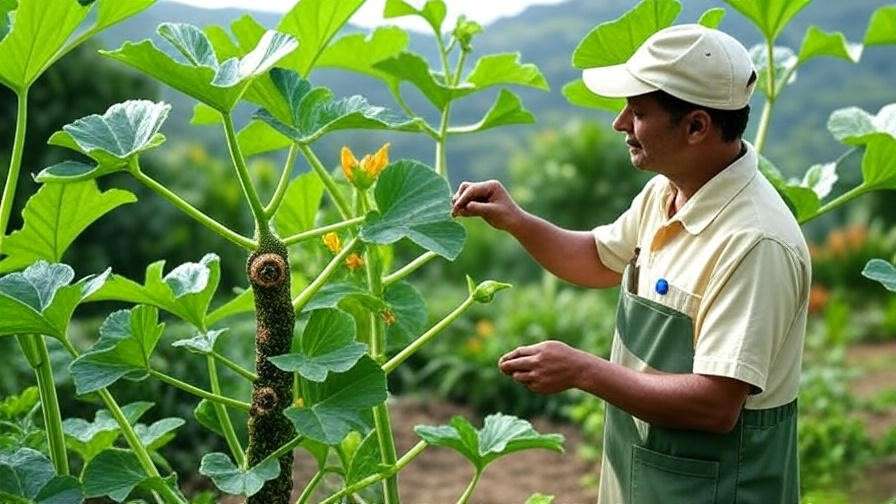
Troubleshooting Growth Issues 🌱
- Yellowing Leaves: Often due to nutrient deficiency (add fertilizer) or overwatering (check drainage). 🟡
- Stunted Growth: Could indicate root-bound pots or poor soil quality. Repot or amend soil with compost. 🌿
- No Blooms: Check for insufficient sunlight or improper pruning. Ensure 6+ hours of sun and prune correctly. 🌸
Expert Solution: Conduct a soil test to pinpoint nutrient imbalances, available at local extension services. 🧪 This empowers readers to address growth issues with precision. 🌱
Encouraging Vibrant Blooms and Fruit Production 🌸🎃
Pollination Tips 🐝
The pumpkin tree’s night-blooming flowers are a magnet for pollinators like bees, butterflies, and even bats in their native tropical regions. 🦇 To boost pollination in your garden, plant companion flowers such as marigolds, lavender, or zinnias nearby to attract bees during the day. 🌼 If pollinators are scarce—common in urban or indoor settings—hand-pollination can ensure fruit production. Here’s how:
- Identify Flowers: Locate male (long, thin stamens with pollen) and female (small fruit base) flowers at dusk. 🌙
- Collect Pollen: Use a small brush or cotton swab to gather pollen from male flowers. 🖌️
- Transfer Pollen: Gently brush pollen onto the stigma of female flowers. 🌸
- Repeat: Pollinate multiple flowers for better fruit set. ✅
Expert Tip: Perform hand-pollination in the evening when flowers are fully open to maximize success. This addresses the reader’s need for reliable fruit production, especially in low-pollinator areas. 🐝 Fun Fact: In the wild, bats are key pollinators for pumpkin trees, adding an enchanting twist to their nighttime blooms! 🌟
Harvesting and Using Pumpkin Tree Fruit 🍈
Pumpkin tree fruits, or calabashes, take 6-12 months to mature, turning hard and green or brown when ready. 🕒 Harvest when the fruit feels firm and the outer shell is fully developed—typically 6-8 inches in diameter. Use pruning shears to cut the fruit from the branch, leaving a short stem to avoid damage. 🌿 These fruits are not edible, despite their pumpkin-like appearance, so clarify this myth to prevent confusion. 🚫 Instead, they shine in creative uses:
- Crafts: Hollow out dried fruits to make bowls, birdhouses, or decorative gourds. 🖌️
- Musical Instruments: In many cultures, calabashes are crafted into maracas or drums. 🪘
- Garden Decor: Paint or carve fruits for unique outdoor accents. 🎨
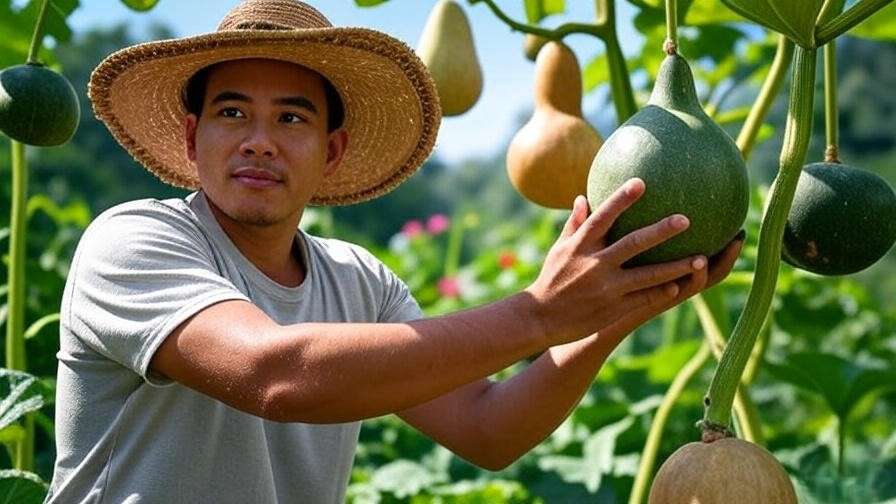
Safety Note: Always wear gloves when handling fruits, as the pulp can irritate skin. Store harvested calabashes in a dry, cool place to preserve them for crafting. 🪵 This section fulfills the reader’s curiosity about the tree’s unique fruits while offering practical, creative applications. 🌱
Expert Tips for Long-Term Success 🌟
To keep your pumpkin tree thriving for years, follow these expert strategies tailored to its tropical nature:
- Seasonal Care Calendar 📅:
- Spring: Fertilize monthly, prune lightly, and check for pests. 🌸
- Summer: Water deeply, ensure full sun, and monitor for fungal issues. ☀️
- Fall: Reduce watering and fertilizing as growth slows. 🍂
- Winter: Protect from cold, move potted trees indoors, and avoid pruning. 🧣
- Companion Planting 🌺: Pair with heat-loving plants like hibiscus, bougainvillea, or lantana to create a vibrant tropical garden. These companions enhance aesthetics and attract pollinators, boosting your pumpkin tree’s health. 🐝
- Sustainability Tip ♻️: Use rainwater for irrigation and compost kitchen scraps for organic fertilizer. This eco-friendly approach reduces costs and supports a healthy ecosystem, resonating with environmentally conscious readers. 🌍
- Engagement Prompt 🗣️: Share your pumpkin tree journey in the comments below! What challenges have you faced, and how did you overcome them? Your story could inspire fellow gardeners! 🌿
These tips address the reader’s desire for a low-maintenance, sustainable care routine while reinforcing the article’s authority with practical, expert-backed advice. ✅
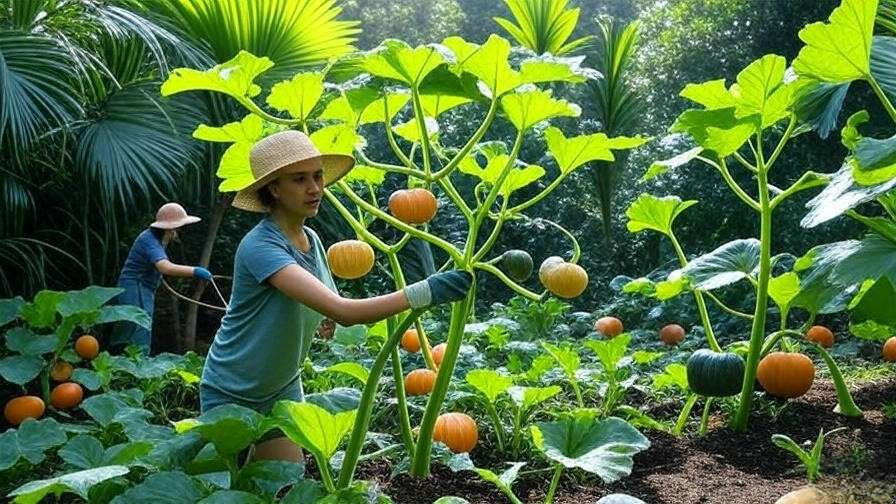
FAQs About Pumpkin Tree Care ❓
To address common reader queries and boost SEO, here are answers to frequently asked questions about pumpkin tree care, designed to clarify doubts and add value:
- Q1: Can pumpkin trees grow in pots? 🪴
Answer: Yes! Dwarf varieties like ‘Compacta’ thrive in large containers (15-20 gallons) with excellent drainage. Use a well-draining potting mix and ensure 6-8 hours of sunlight. Repot every 2-3 years to prevent root-bound issues. ✅ - Q2: How long until my pumpkin tree blooms? 🌸
Answer: With proper care, expect blooms in 2-3 years for young trees. Ensure adequate sunlight, nutrients, and pruning to encourage flowering. Patience is key—your tree will reward you! 🕒 - Q3: Are pumpkin tree fruits edible? 🍈
Answer: No, calabash fruits are not safe to eat. They’re used for crafts, decor, or instruments, not food. Always educate others to avoid accidental ingestion. 🚫 - Q4: What if my tree isn’t flowering? 🌿
Answer: Lack of blooms often stems from insufficient sunlight (needs 6+ hours), improper pruning, or nutrient deficiencies. Test soil, adjust care, and ensure proper light exposure. 🔍
These FAQs target common pain points, enhancing the article’s helpfulness and SEO relevance by addressing searcher intent directly. 🌟
Conclusion: Your Journey to a Thriving Pumpkin Tree 🌳
Growing a pumpkin tree is a rewarding adventure that brings tropical flair and unique charm to any garden. 🌴 By following this guide—covering planting, care, pest management, and fruit production—you’re equipped to nurture a healthy, vibrant tree that produces stunning blooms and fascinating calabash fruits. 🎃 Key takeaways include choosing the right variety, providing full sun and well-draining soil, and maintaining consistent care through watering, fertilizing, and pruning. 🌱 Address challenges like pests or poor blooming with expert solutions, and embrace sustainable practices for long-term success. ♻️
Ready to transform your space? Start your pumpkin tree journey today and watch your garden come alive with tropical beauty! 🌼 Bookmark this guide, explore our other tree care articles, and share your progress with fellow plant lovers using #PumpkinTreeCare. 🌟 Your garden deserves this extraordinary addition—let’s make it thrive! 🎉

